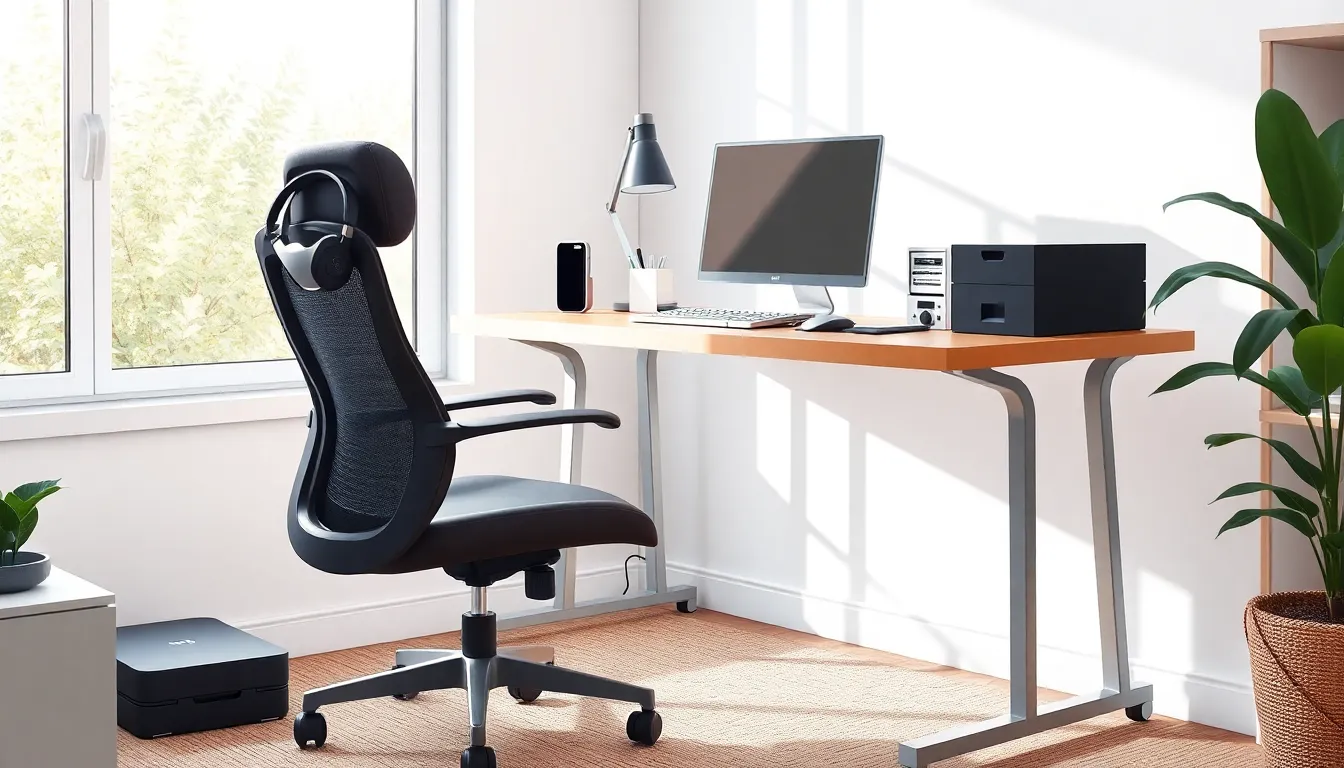Working from home can feel like a dream come true—no commute, fuzzy slippers, and the fridge always within reach. But let’s be real; it’s not all sunshine and rainbows. Without the right practices, the couch can become a productivity black hole, and those snack breaks can turn into mini-vacations.
Table of Contents
ToggleUnderstanding Work From Home Practices
Understanding effective work from home practices helps individuals optimize their productivity. Setting a designated workspace is crucial; it creates a boundary between professional and personal life. Implementing a consistent schedule increases focus, positioning work hours similarly to an office environment.
Minimizing distractions enhances concentration. Techniques such as using noise-canceling headphones can block out background noise, while tools like website blockers prevent excessive social media browsing. Engaging in regular breaks rejuvenates the mind and maintains energy levels.
Employers play an essential role in supporting their remote workforce. Providing clear communication channels fosters collaboration among team members. Utilizing project management software streamlines tasks, ensuring accountability and progress tracking.
Cultivating a healthy work-life balance is vital. Restricting work availability to designated hours allows personal time for relaxation and family. Encouraging social interaction among remote workers helps combat feelings of isolation, ensuring team spirit stays alive.
Monitoring one’s performance aids in identifying areas for improvement. Tracking daily accomplishments showcases productivity patterns and can inform future adjustments. Prioritizing goals creates an actionable roadmap, guiding daily tasks and focusing efforts.
Overall, cultivating positive habits contributes to a successful work from home experience. Adopting these practices can lead to enhanced productivity, job satisfaction, and overall well-being, aligning both personal and professional aspirations.
Creating an Effective Workspace

An effective workspace fosters productivity and minimizes distractions. Establishing a dedicated area enhances focus and efficiency.
Ergonomics and Setup
Ergonomic considerations play a crucial role in comfort during work hours. A properly adjusted chair promotes good posture, reducing the risk of discomfort. The desk height should allow for elbows at a 90-degree angle. Positioning computer monitors at eye level prevents neck strain and fatigue. Utilizing a footrest can further enhance overall comfort. Lighting in the workspace needs attention; natural light is optimal but task lighting is also beneficial. Maintaining a clutter-free desk can improve concentration and workflow.
Choosing the Right Tools
Tool selection significantly impacts productivity when working from home. A quality computer or laptop facilitates smooth performance and reduces frustration. Noise-canceling headphones can block distractions, fostering concentration. Collaboration software, such as Slack or Microsoft Teams, streamlines communication with colleagues. A reliable internet connection ensures uninterrupted access to work materials and meetings. Consideration of task-specific tools, like project management apps, can enhance organization and efficiency. Adopting these tools creates a more effective working environment.
Establishing a Routine
Establishing a routine plays a critical role in maximizing productivity when working from home. A structured schedule helps maintain focus and organization.
Time Management Techniques
Prioritizing tasks effectively ensures work is completed efficiently. Using techniques like the Pomodoro Technique promotes focused work bursts followed by breaks. Setting specific time blocks for various tasks provides clarity on daily objectives. Scheduling important meetings during peak energy hours aids in maintaining engagement. Avoiding multitasking enhances concentration and task quality. Tracking progress regularly allows adjustments to be made for improved outcomes. Developing a habit of reviewing progress at the end of each day fosters accountability.
Balancing Work and Personal Life
Maintaining boundaries between work and personal life is essential for overall well-being. Setting specific work hours creates a clear distinction, allowing for downtime. Taking regular breaks throughout the day prevents burnout and refreshes focus. Engaging in hobbies during off-hours fosters relaxation and creativity. Reserving evenings for family or personal activities strengthens relationships. Communicating availability to family members helps minimize distractions during work hours. Recognizing signs of stress and taking proactive measures supports mental health management.
Communication Strategies
Effective communication plays a crucial role in maintaining productivity while working from home. Strong communication strategies foster collaboration and ensure clarity among team members.
Utilizing Technology for Connection
Technology serves as a vital tool for remote communication. Utilizing video conferencing platforms like Zoom or Microsoft Teams supports face-to-face interactions. Additionally, team collaboration apps such as Slack enable instant messaging, allowing quick exchanges of information. Scheduling virtual meetings helps maintain connection and provides opportunities for brainstorming. Incorporating shared documents through Google Drive or Dropbox can streamline project updates and feedback. Prioritizing these tools keeps teams engaged and connected, promoting a productive work atmosphere.
Regular Check-Ins with Team Members
Regular check-ins maintain team cohesion and accountability. Scheduling weekly status updates ensures everyone stays aligned on project goals. Supervisors can ask for progress updates and address concerns during these meetings. Furthermore, informal check-ins contribute to team bonding, enhancing relationships and morale. Encourage team members to share successes and challenges, allowing collective problem-solving. Setting aside time for one-on-one meetings can also provide personalized support and guidance. These regular interactions create an environment where communication flourishes, ultimately boosting overall productivity and job satisfaction.
Staying Motivated and Productive
Maintaining motivation and productivity in a home setting requires intentional strategies. Effective practices can help individuals stay focused and engaged.
Setting Goals and Milestones
Establishing specific goals boosts motivation. Identifying short-term and long-term targets provides clear direction. Setting achievable milestones allows individuals to track their progress and celebrate small successes. Regularly evaluating these goals enables timely adjustments to stay aligned with overarching objectives. Utilizing tools such as digital planners or apps helps manage tasks efficiently.
Avoiding Common Distractions
Minimizing distractions is essential for maintaining productivity. Identifying common sources of interruptions, like social media or household chores, allows individuals to create effective strategies. Designating specific times for personal tasks keeps the focus on work during dedicated hours. Utilizing noise-canceling headphones or white noise can enhance concentration in a bustling environment. A clean, organized workspace contributes to reducing visual distractions, reinforcing a productive atmosphere.
Embracing the best practices for working from home can transform the remote work experience. By creating a dedicated workspace and establishing a consistent routine, individuals can enhance their productivity and maintain focus. Prioritizing effective communication and utilizing the right tools fosters collaboration and connection with team members.
Moreover, setting clear boundaries between work and personal life is crucial for overall well-being. Incorporating time management techniques and staying motivated through goal-setting can lead to a fulfilling work-from-home journey. With these strategies in place, remote workers can achieve a harmonious balance between their professional responsibilities and personal lives, paving the way for success in today’s evolving work landscape.




